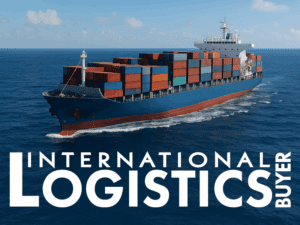According to RTITB, failure to acknowledge the importance of those currently, or considering, working as LGV drivers is putting the future of the profession, and the UK logistics sector, at risk.
“In our work with the transport and logistics industry, we all too often hear from LGV drivers that they do not see their job as a professional vocation and that others do not see them as professionals either,” says Laura Nelson, Managing Director of RTITB, the UK’s largest Driver CPC Consortium. “This is worrying for our sector, as a lack of support from current LGV drivers will inevitably make it more difficult to attract new drivers to enter the profession.”
Although a recent white paper from Talent in Logistics stated that there are currently 300,000 LGV drivers in the UK, the Freight Transport Association (FTA) Logistics Report 2019 suggested that around 15% of HGV driver roles will remain unfilled this year. This is often attributed to the logistics skills shortage and the retirement of existing drivers whose roles are not filled by new talent. It is also expected to be affected by drivers who are EU citizens potentially leaving the UK due to Brexit. However, RTITB suggests that there is little incentive to join a profession that feels unappreciated and unimportant.
“LGV drivers have relatively few opportunities for direct interaction with their employer – they often leave early and return late – and little attention is paid even to the very best drivers,” says Laura. “If we fail to communicate with, recognise and reward the most exceptional performers, what incentive is there for new talent to join our sector?”
“Employers should remember the important role that LGV drivers play – they are the face of your business on the road, a direct link to customers and often the front line of customer service. They are also responsible for high value equipment and stock,” says Laura. “What’s more, it takes a lot of skill, commitment and time to become an LGV driver.”
Drivers must complete four training modules to gain their LGV licence, including theory/hazard perception, a case study, driving ability and a practical demonstration safety test. They must also complete an ability test for their HGV Cat C+E licence and attend and complete Driver CPC (Certificate of Professional Competence) Periodic Training.
Once qualified and employed, professional LGV drivers must be committed to maintaining a good driving record, protecting the company’s operator licence, complete driving assessments and have their performance monitored (including by telematics). They are often tasked with helping a company achieve KPIs (key performance indicators), for example, the number of deliveries made per day, accuracy of delivery times and reductions in stock loss or damage.They must also complete the required amount of Driver CPC training hours per 5-yearly cycle to remain compliant.
“LGV drivers have acquired a bad reputation, being blamed for incorrect or late deliveries and for driving ‘slow, annoying lorries’ which take up space on the roads,” says Laura. “Many people are completely unaware of the lengths that LGV drivers must go to in order to become qualified – it is a ‘forgotten profession’ and rarely viewed as a career.”
“However, LGV driving actually offers some fantastic career progression routes into training, operations or management roles and is often far from being low-level, poorly paid work,” she continues, explaining that the annual salary for an LGV driver is around £30k, more than the UK’s national average, and around £10k more than people think it will be*.
Despite this, the FTA Logistics Report 2019 highlighted that there was a 37% fall in the number of logistics apprenticeships, indicating that young people are being attracted to work in other sectors.
“One important way that our industry can encourage new talent into the industry and retain the skills of highly trained existing LGV drivers, is through training,” says Laura.“Showing that you deliver training that benefits the employee, as well as the business, is key. We also encourage employers to pay for the training as this shows employees that they are valued and appreciated.”
Working with on-site Instructors, businesses can effectively develop a full training and development plan for drivers which demonstrates a commitment to providing the right training, rather than just ticking the compliance box. For instance, Driver CPC training should be planned and used to help keep drivers safe while improving and expanding their skillset.
“Providing drivers with opportunities for career progression, as well as chances to develop and demonstrate their skills and knowledge via training, is absolutely key if we are going to give drivers the level of attention they deserve and keep them carrying out vital work within our sector,” says Laura.
Joining a consortium, such as the RTITB Master Driver CPC Consortium, can give employers access to a wide range of training topics that help to meet business objectives while providing drivers with professional skills. RTITB also offers bespoke course development to help employers tackle areas that are unique to their business or operation.
“Another very effective way that logistics employers can demonstrate their commitment to training is through apprenticeships,” says Laura. “We encourage businesses to make the most of the apprenticeship levy! Although the apprenticeship system is far from perfect for our industry, we should still take advantage of the money that logistics companies are putting into the levy pot by taking on apprentice LGV drivers.”































